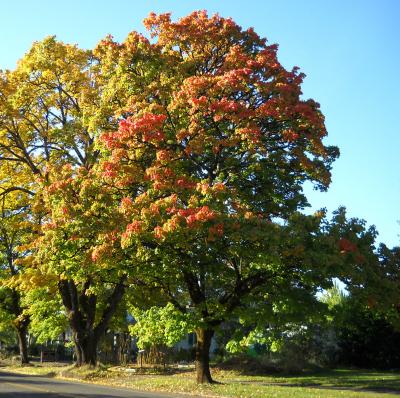Trees and Landscaping
The City of Corvallis recognizes the role of urban trees and landscaping in providing environmental, economic, social and aesthetic benefits. Specific benefits provided by a healthy urban forest include improved air and water quality, erosion control and reduced storm water runoff, shading and windbreaks (resulting in reduced energy costs), wildlife habitat, and increased property values. As such, the Corvallis Land Development Code (LDC) includes standards both for the preservation of existing trees, as well as for the planting of new trees and landscaping with development. In addition, the City Urban Forester administers the City's Urban Forestry program, which includes oversight of street tree installation, removal and maintenance.
This page includes links to resources and Code sections applicable to tree preservation standards, street trees, and landscaping requirements associated with development.
Tree Preservation
Within the City, there are several regulations that may prevent the removal of an existing tree(s). These include:
- Mapped Natural Features areas, including:
- 100-year Floodplain / Floodway areas (see LDC Chapter 4.5);
- Significant Vegetation areas (see LDC Chapter 4.12);
- Wetland / riparian corridor areas (see LDC Chapter 4.13); and
- Areas with slopes exceeding 35 percent (see LDC Chapter 4.14).
- Planned Developments, subdivisions, shopping centers and other approved developments with specific tree-related conditions;
- Trees within an Historic District, or on property containing a designated Historic Resource;
- Heritage Trees; and
- Street Trees (which are under the purview of the City Urban Forester).
If you have questions regarding tree removal or protection provisions for a specific property, please contact Development Services at 541-766-6929.
Tree Protection Fencing Guidelines
Tree Protection Fencing Sign (must be attached to fencing as per the Tree Protection Fencing Guidelines)
Wildland Urban Interface Mitigation Guide
Street Trees
Street trees (located in the public right-of-way, typically in a planting strip) are under the purview of the City Urban Forester, who works in the Parks and Recreation Department. A permit must be obtained from the City Urban Forester prior to the pruning, removal or planting of any street tree. Existing street trees are maintained by Parks and Recreation Urban Forestry staff.
With development, the LDC requires the installation of new street trees along the development site's street frontage. Street tree obligations must be fulfilled prior to project completion, either through physical installation of required street trees by the development applicant, or through payment into the City's "Tree for a Fee" program. Please review the City's Street Tree Guide for more information regarding street tree requirements associated with development.
Street Tree / Forestry Permits
Street Tree Species - Approved List (2024)
Trees and Landscaping With Development
The LDC sets forth landscaping standards applicable to development. Most landscaping standards are contained in LDC Chapter 4.2. These include (but are not limited to) requirements for street trees, parking lot trees, parking lot buffers, screening and irrigation. Additional landscaping standards are scattered throughout the LDC, and may apply depending on the characteristics of an individual development site. If you have specific questions regarding LDC landscaping standards, please contact Development Services at 541-766-6929.
Additional Resources
OSU Extension - Tree Protection on Construction and Development Sites Guidebook

